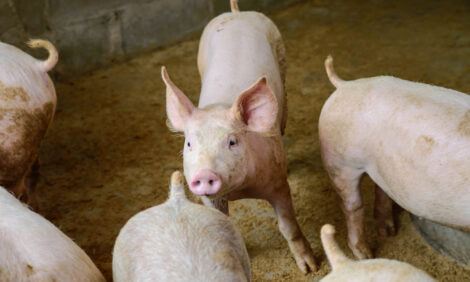



Market Preview: Few Surprises in Hogs & Pigs Report
US - This week, in National Hog Farmer's weekly Market Preview, Steve Meyer, Ph.D. of Paragon Economics, Inc., writes about the latest Hogs and Pigs report.Friday’s USDA Hogs and Pigs report was pretty much as expected. Table 1 contains the key data from the report, the average pre-report estimates of market analysts, and the differences between the numbers.

The differences between expected and actual numbers are less than 1 per cent, with the exception of the 180-lb. and over category, although the USDA number for that category agrees almost precisely with slaughter levels since 1 September.
The market hog inventory and all weight class numbers indicate that supplies will, as expected, remain below year-ago levels for the remainder of this year and for most of Q1-2011. But note that the year-on-year percentages get larger as the weight classes get smaller – an indication that production is catching up to year-earlier levels over time. In my estimates, I have slaughter exceeding 2010 levels by June of next year.
USDA’s breeding herd estimate shows the herd getting smaller by 18,000 head since 1 June. That was a bit of a surprise given the low levels of sow slaughter and no clear indication that fewer gilts were being marketed (based on a percent of total barrow and gilt slaughter). The report suggests a small buildup of sow numbers. While actual and anticipated profits no doubt encouraged some herd rebuilding, the risk cast over the hog business by rising feed prices and the proposed Grain, Inspection and Packers and Stockyards Administration's (GIPSA) rule has very likely caused some producers to delay taking action. According to this report, the sow herd is only 10,000 head larger on 1 September than it was on 1 March.
USDA revised some of its June numbers to reflect the lower slaughter this summer. Dec-Feb farrowings were lowered by 29,000 litters to 2.872 million and the Dec-Feb pig crop was lowered by 281,000 head to 27.592 million. The 1 June inventory of pigs weighing from 120-179 lb., which was over 5 per cent lower than in 2010 in the original report was dropped by another 250,000 head, to 12.029 million. That 250,000 head is the lion’s share of the shortfall of actual vs. expected slaughter this summer, giving new credence to the beliefs of many that the pigs were never available in the first place.
Key Points in the Report
So what do these numbers mean? Supply and price forecasts appear in Tables 2 and 3, respectively. Note that only the Livestock Marketing Information Center (LMIC) and I have posted their price forecasts at this point. Agricultural Economists Ron Plain at the University of Missouri and Shane Ellis at Iowa State University provided their price forecasts on a media call sponsored by the National Pork Board on Friday afternoon. Neither provided slaughter estimates at that time.


Price forecasts are generally profitable through Q3 of 2011. Q4-2010 and Q1-2011 profit margins will be small based on current corn and soybean meal futures. Q1-2011 profits depend heavily upon next year’s corn and soybean crops.
One interesting side note is to look at where the reductions have taken place. The 1 September breeding herd was 105,000 head smaller than one year earlier. During that year, North Carolina’s breeding herd shrank by 110,000 head and Texas’s herd shrank by 15,000 head. Minnesota and Nebraska lost 10,000 sows. The largest gainers were Kansas and Illinois with 20,000 more sows and Pennsylvania gaining 15,000.
Texas and North Carolina also saw the largest declines in market hog numbers at 605,000 and 590,000, respectively. Iowa’s market herd fell by 400,000 during the year. Illinois and Kansas led the market herd gains at 130,000 and 60,000 head, respectively.
Canadian Hog Import Data Still Lagging
There is good news and bad news regarding the Canadian hog import data. The good news is that the Agricultural Marketing Service (AMS) and Animal & Plant Health Inspection Service (APHIS) have the new data base up and running and we have some data for the weeks since 7 July. The bad news is that the latest data is, at present, for the week of 28 August. I’m sure they will get current someday – hopefully soon.










